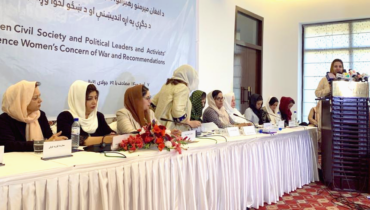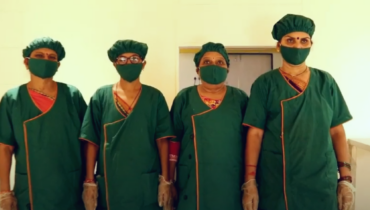During my semester abroad in Santiago, Chile, I witnessed peaceful protests met with tear gas, water cannons, and rubber bullets. At night, the sound of my air conditioning was overpowered by screaming, shooting, and ambulances. The smell of tear gas and smoke were omnipresent, necessitating masks in order to walk in the city streets.
How did we get here—and where do we go now?
In early October, Chilean president Sebastián Piñera announced that rush-hour metro prices would rise by 30 pesos (0.04 USD). This was the second fare increase this year, and the average Chilean already spent around 13.8% of their salary on transportation. In response, Chilean students began calling for massive metro fare evasions and thousands swarmed the streets, burning metro stations and jumping turnstiles. Within a day, the President declared a state of emergency in Santiago, restricting citizens’ movement and their right to assemble, and mobilizing the Chilean military—around 10,500 troops and police swarmed the streets of Santiago alone. This was the first time since the 1990 transition to democracy that the military was deployed for political reasons.
As the protests continued, Santiago’s bustling metro system came to a historic halt, with nine stations completely burned down, while the Arturo Merino Benítez Airport saw mass flight disruptions. On October 25, over a million people peacefully gathered in Santiago’s Plaza Baquedano, now renamed Plaza Dignidad (Dignity Plaza), making it the largest march in Chilean history. These peaceful protests were met with extreme force by the police. According to Chile’s National Institute of Human Rights, between October 19 and November 15 there have been 23 people killed; 2,381 injured; and 6,362 people detained by the police, 759 of whom were adolescents.
The current crisis in Chile is not simply the result of a rise in metro prices. The popular mantra, “No son 30 pesos, son 30 años,” or, “it is not 30 pesos, it is 30 years,” references the 30 years since the end of Chile’s military regime in which pro-democracy parties have failed to answer to the social demands of citizens. The fare increase was just the tip of the “Chilean Iceberg,” formed by the crisis in Chile’s pension system; exorbitant salaries of the political elite; collusion in toilet paper, chicken, and pharmacy businesses; the unheard-of privatization of water; an inadequate health care system; lack of affordable education; and more.
While there is no formal opposition leadership or single list of demands, most protesters are calling for systemic change, improved social conditions, and justice for human rights violations. Protesters are also demanding a new constitution, as the current constitution of 1980 was written and passed under dictator Augusto Pinochet. Recently, the government agreed to hold a two-question referendum this April, and if the referendum passes, Chileans will directly elect the citizen representatives for the constitutional convention in October 2020.
Every evening at 5 p.m., I watched the protests from my balcony and saw a sea of faces, ranging from the elderly to young children with their parents, Chilean and Mapuche flags waving high in the air, and homemade signs calling for better education and health care. The social unrest that rocked Chile was made up of thousands of people peacefully demanding their basic rights, people of all ages and social classes suddenly unified. After decades of living under a military regime, fear was not the mentality of those going out to the streets. Rather, they held signs with the emboldened cry of “Nunca más—“never again”—a reference to the brutal and systematic human rights violations that plagued the country under Pinochet between 1973 and 1990.
While walking on a street in Santiago, I saw a police truck whirl down the street and officers attempt to throw a young man, probably my age, in the back. A fellow onlooker, an older woman, told me that she felt a pit in her stomach because this is exactly what the police and military did during the dictatorship: they drove down neighborhood streets, stopped the truck, threw an individual in the back, and drove off. Often that individual was never seen again.
Chilean women have been active in the protests. On November 1, a group of women called “Mujeres de Luto,” or “Women of Mourning,” marched in silence from Plaza Italia, the hub of the protests, to La Moneda, the presidential palace, to deliver a petition with demands to end the state violence. Adorned in all black with white flowers, the women marched for the 23 people who have died during the protests. Some wore eye patches in solidarity with the hundreds who have lost their sight as a result of bullets fired by police. Martiza González, one of the women who participated, said in Spanish: “We women have called a march of silence for the victims of human rights violations and for the dead, for the raped women, because there is no justice with the police…women are resistant, strong, and very organized.”
An organization called “Asociación de Abogadas Feministas de Chile,” or, “Association of Feminist Lawyers of Chile,” has worked to inform Chilean citizens of their rights during the state of emergency. The association is also working with survivors of sexual violence, as they have received 58 complaints by survivors of harassment, forced nudity, beatings, and rapes during this time. The director of the association stated that much of the violence experienced by women in detention centers aims to punish the women for protesting in a patriarchal society. As of November 12, Chile’s National Institute of Human Rights has filed legal actions for 93 survivors of sexual violence. The Ministry of Women and Gender Equity announced that it formed a team of professionals to accompany women who reported sexual violence during the period of social unrest. The team will coordinate with the United Nation’s Human Rights Commission and Chile’s National Institute of Human Rights in order to ensure that access to justice is available for survivors.
Classes at my school, Universidad de Católica, were canceled for weeks, and the metro station by the school was one of the many badly damaged during protests. The first few days were filled with uncertainty and sometimes fear, as a simple walk to the grocery store could be met with tear gas or a run-in with the police. When week four of the protests came around, my program gave us the option of an early departure, and I decided to return to the U.S. to finish my course work remotely.
I am disappointed by the lack of U.S. news coverage on the situation in Chile. There are civil protests erupting all around the world right now: Hong Kong, Lebanon, Iran, Iraq, Ecuador, Bolivia, and Algeria, to name a few. In all of these countries, peaceful protests are being met with unprecedented and unjustified uses of force by the military and police. There is a fire running across the globe of citizens who are fed up with their governments’ waning democratic principles, lack of action to address economic inequality, and encroachments on freedom, liberty, and human rights. These protests are not domestic problems, they are global in their scope and effect. They are not issues that can be dismissed as problems “over there” that could not happen “here.” The global wave of protests is not isolated, and every country should be supporting the victims of oppressive violence with the rallying cry of nunca más.
Cira Mancuso is a student Communications Assistant for the Georgetown Institute for Women, Peace and Security. She is a third-year student in the School of Foreign Service at Georgetown University, majoring in International Politics with a concentration in International Security and minoring in Spanish.


